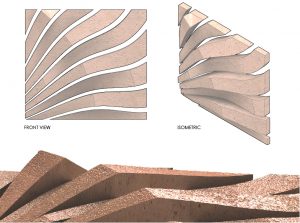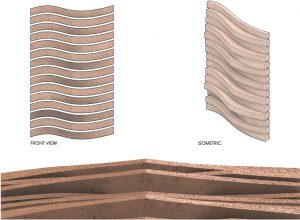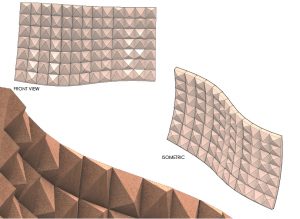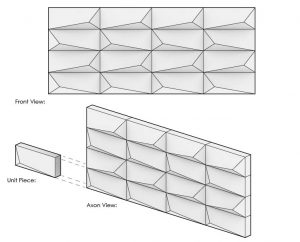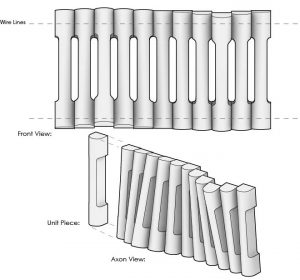Each terra-cotta iteration consists of a pattern that reacts to sun path rays and creates various different visuals throughout the day. It creates the illusion that the architecture is lively without even the facade actually moving. Two of the iterations have small channels that allow for light/air to filter through, while the third iteration is purely a patterned design that relies solely on visual manipulation.
Part of the construction process would most likely consist of a structural boarder that has cables running through or along each module that create a quasi curtain wall segement.
This iteration explores a concept of shadows climbing vertically up the wall despite its static layout. The goal is for a person who is walking past the wall to experience a shift in dark and light spaces due to the different angled planes on the walls facade. The whole wall is made from a singular unit but arranged on the wall in different orientations. This form can be imagined as either a screen wall, or intergrated into the construction of the wall itself.
This iteration was an attempt to create a terracotta wall condition using extruded members rather than RAM pressed “bricks”. Here, these rounded extrusions are hung from wire and are then rotated around that given point to create a fluid moving feel as one walks past the wall. The pieces are further altered by a scoop cut taken out of the center sides of each piece. This allows light to pass through the wall in interesting ways while further altering the shadow arrangement as someone walks by. The rotating of the pieces and center cuts also creates a moment where one’s sightlines can only pass fully through the wall when they are directly infront of a given whole. This means that as one walks down the length of the wall, their view into the space behind the wall will change as their postion infront of it does.
